Explore Marondera - Zimbabwe Travel, Africa
Nestled in the heart of Zimbabwe, Marondera is a hidden gem waiting to be discovered. Known for its tranquil landscapes, rich cultural history, and vibrant local life, this town offers a refreshing escape from the hustle and bustle of larger cities. For travelers who appreciate nature, Marondera provides a serene environment, surrounded by lush greenery and wildlife reserves. Marondera is located just an hour’s drive from the capital, Harare, making it an easy day trip or a peaceful weekend getaway. With a blend of natural beauty, fascinating cultural heritage, and welcoming locals, it’s an ideal spot for travelers seeking both relaxation and adventure.
Population: Approximately 66,000 in 2022.
Economy: Marondera's economy is primarily driven by agriculture, with tobacco, maize, and horticulture being key sectors. It also benefits from tourism, particularly due to nearby wildlife reserves.
Landmarks: Famous for the Gosho Park, Imire Game Park, and the Marondera National Heroes Acre.
Zimbabwe
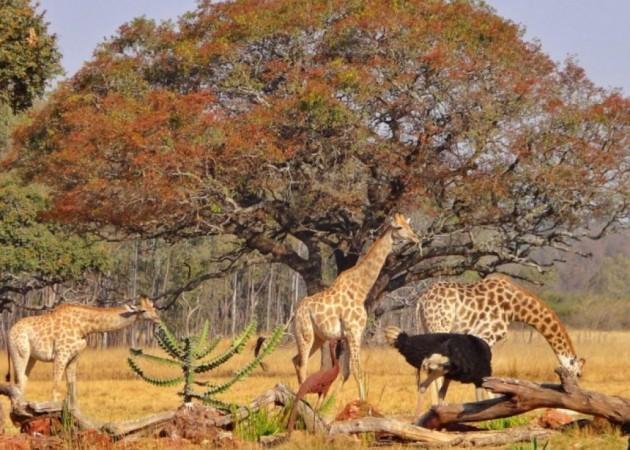
Overview of Marondera
History & Cultural Influence
Marondera’s roots run deep in Zimbabwe’s history. Originally established as a colonial settlement in the late 19th century, it was first known as Marandellas. The town has evolved over the years from a colonial outpost into a thriving community deeply connected to the Shona people, Zimbabwe’s largest ethnic group. The influence of the Shona culture is palpable throughout the town, from the local language spoken by the residents to the traditional arts and crafts sold in its bustling markets. Visitors can experience this agricultural legacy through farm tours and visits to local markets where fresh produce and traditional Zimbabwean foods are readily available.
Interaction with The Locals
Marondera is home to a population of approximately 66,000 people. The majority of the people are of Shona descent, Zimbabwe's largest ethnic group. The Marondera people are noted for their warmth and kindness, as well as their strong sense of community. Agriculture is crucial to their livelihoods, with many people working on farms and local markets. While the town maintains traditional values, it is gradually modernizing, offering a blend of rural charm and emerging urban development.
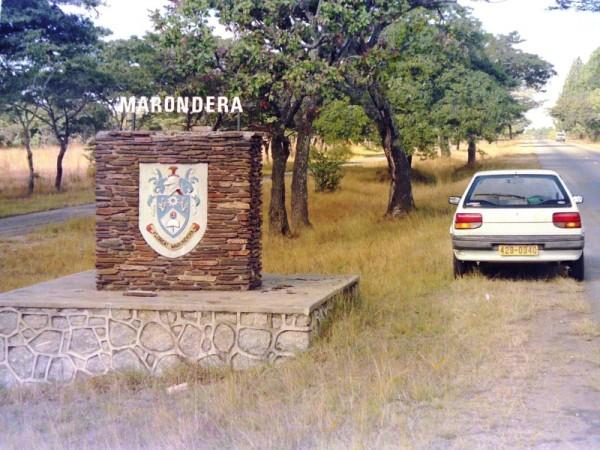
Marondera, Zimbabwe - © New Zimbabwe
Top Attractions in Marondera
Marondera may be a small town, but it boasts an impressive array of attractions that showcase both its natural beauty and historical significance. Whether you enjoy nature or history, there is something here to pique your curiosity.
Gosho Park
If you enjoy outdoor activities, Gosho Park is a must-visit site. This nature reserve is known for its scenic walking trails, diverse wildlife, and birdwatching opportunities. The park is home to several types of antelope, zebras, and over 300 bird species, making it a perfect destination for nature lovers. Take a peaceful hike through its rolling hills, or enjoy a picnic while surrounded by the beauty of Zimbabwe’s natural landscape. The park is family-friendly and perfect for a relaxing day in nature.
Imire Game Park
For those seeking a more thrilling experience, Imire Game Park offers a chance to see Zimbabwe’s iconic wildlife up close. This conservation park is home to rhinos, elephants, and other wildlife species, all protected within its sprawling landscape. Imire is known for its dedication to rhino conservation, and visitors can learn about the efforts to protect these majestic animals while enjoying safari tours through the park. It's an incredible experience that lets you see Zimbabwe's wildlife in its natural habitat.
Marondera National Heroes Acre
History lovers should not miss a visit to the Marondera National Heroes Acre, a memorial site dedicated to Zimbabwe’s freedom fighters. This monument honors those who played a significant role in the country’s fight for independence. The site is a place of reflection, offering visitors a deeper understanding of Zimbabwe’s struggle for freedom and the individuals who sacrificed their lives for the nation.
Dombotombo Ruins
A lesser-known but fascinating historical site, the Dombotombo Ruins give visitors a glimpse into ancient Zimbabwe’s civilization. These stone structures, believed to date back to the time of the Rozvi Empire, are remnants of a once-thriving community. Exploring the ruins offers insight into the early history of the region and the architectural skills of its early inhabitants.
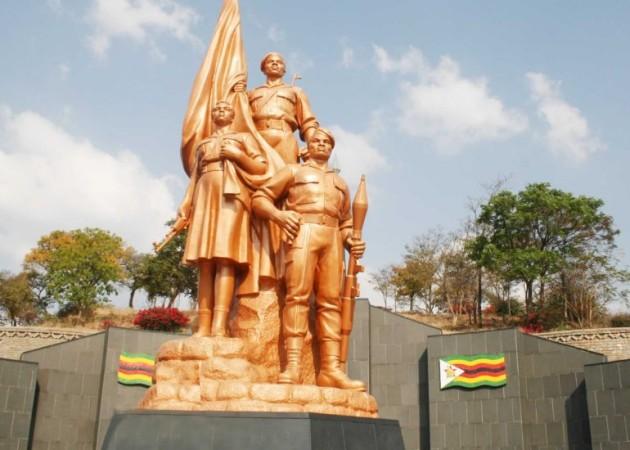
Marondera National Heroes Acre - © Zimbabwe Tourism
Must-Try Dishes in Marondera
Marondera's cuisine reflects Zimbabwe’s rich agricultural traditions, offering travelers an opportunity to taste the region’s fresh and locally sourced ingredients.
- Sadza: A staple across Zimbabwe, sadza is a thick maize porridge served with a variety of side dishes. In Marondera, it’s commonly paired with beef stew, leafy greens like covo, or beans. This hearty meal is a cultural cornerstone and widely enjoyed by locals.
- Nyama Choma: A favorite in social gatherings, Nyama Choma is marinated beef or goat grilled to perfection over an open flame. It’s typically accompanied by sadza or rice and relished during local events or outdoor markets.
- Matemba: Dried kapenta fish, known as matemba, is a popular dish in Marondera. It’s usually fried and served with sadza and leafy greens, delivering a salty, crunchy flavor that’s both simple and satisfying.
- Roasted Groundnuts (Nzungu): Locally grown groundnuts, or peanuts, are roasted and sold as snacks across Marondera. They make for a perfect light bite and are often found at street stalls or markets.
- Muriwo Unedovi: A popular local dish, muriwo unedovi consists of leafy greens cooked with a flavorful peanut butter sauce. The creamy texture and rich taste pair perfectly with sadza, making it a common meal in Marondera households.
- Boerewors: This spicy, coiled sausage of South African origin is widely enjoyed in Marondera, especially during barbecues and festivals. The sausage is grilled and served with a side of sadza or bread, offering a tasty and filling meal.
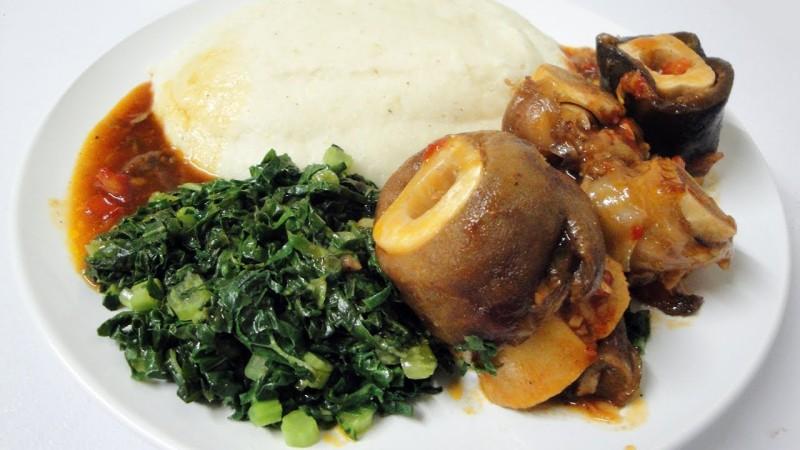
Sadza - © African Food Journal
Festivals & Local Celebrations
Marondera is a town that knows how to celebrate its heritage, and travelers have the opportunity to join in the festivities throughout the year. These local festivals offer a deep dive into the culture, history, and communal spirit of Marondera and Zimbabwe as a whole.
Zimbabwe Independence Day (April 18th)
A significant national celebration, Independence Day in Marondera is filled with parades, music, and dance performances that reflect the town’s patriotic spirit. The streets come alive with vibrant displays of Zimbabwean culture, from traditional dances to performances by local musicians. It’s a great time for visitors to witness the pride and history that runs deep in the community.
Zimbabwe Heroes Day (August)
Another important event, Heroes Day, honors Zimbabwe’s freedom fighters. Ceremonies are held at local memorial sites, including Marondera’s National Heroes Acre, where locals gather to pay tribute to the individuals who fought for the country’s independence. It’s a solemn yet powerful celebration that highlights the sacrifices made in Zimbabwe’s history.
Local Harvest Festivals
As an agricultural hub, Marondera hosts harvest festivals that celebrate the land and its bounty. These festivals are vibrant gatherings where locals express gratitude for their crops with food, music, and dance. Visitors can enjoy traditional dishes, meet local farmers, and experience the deep connection between the people and their land.

Zimbabwe Heroes Day - © The New York Times
What to Do in Marondera
Marondera offers a diverse range of activities for tourists, blending adventure with relaxation and cultural immersion. Whether you prefer exploring nature or learning about local traditions, the town provides plenty of options for travelers seeking enriching experiences.
- Safari Tours at Imire Game Park: Imire Game Park is one of the region’s premier wildlife reserves, known for its conservation efforts, particularly in protecting rhinos. Visitors can embark on guided safaris to see rhinos, elephants, and other wildlife in their natural habitats.
- Hiking in Gosho Park: Gosho Park offers beautiful hiking trails through its rolling hills and woodlands. The park is home to a variety of animal species, including zebras and antelopes, and offers a relaxing retreat into nature. Birdwatchers will also enjoy spotting the wide variety of birds that frequent the park.
- Horseback Riding: Horseback riding is a popular activity in the Marondera area, particularly at local farms and nature reserves. It’s a unique way to explore the surrounding countryside while enjoying the fresh air and scenic views.
- Birdwatching: Marondera is a prime location for birdwatchers, with over 300 species found in the area. Both Gosho Park and Imire Game Park are excellent spots for observing Zimbabwe’s vibrant birdlife. Pack your binoculars and enjoy a serene morning or afternoon spotting some of the rare species that call the region home.
Shopping in Marondera
Marondera’s markets and shops provide a wonderful opportunity for visitors to bring home a piece of Zimbabwean culture. The town is known for its vibrant marketplaces, where locals gather to sell fresh produce, handmade crafts, and unique souvenirs:
- Marondera Central Market: This bustling marketplace is a hub of activity and a great place to interact with the locals. Here, you can find fresh fruits, vegetables, and other farm products, reflecting Marondera’s agricultural roots.
- Shona Crafts and Sculptures: Marondera is one of the most famous stone carvings workshops in Zimbabwe. Local artisans craft intricate pieces from soapstone, serpentine, and other materials, showcasing Zimbabwe’s rich artistic heritage. These sculptures make for unique and authentic keepsakes.
- Textiles and Beadwork: Visitors can also explore stalls offering handmade textiles and beadwork. From colorful fabrics to intricately beaded jewelry, these items are crafted using traditional techniques passed down through generations.

Safari Tours at Imire Game Park - © Imire Rhino & Wildlife Conservation
Weather in Marondera: Best Time to Visit
Marondera enjoys a temperate climate, making it an appealing destination year-round. The town experiences distinct dry and rainy seasons, each offering unique experiences for travelers.
Dry Season in Marondera
The dry season is the best time to visit Marondera, with clear skies, cooler temperatures, and low humidity. Daytime temperatures average between 18°C to 25°C (64°F to 77°F), making it perfect for outdoor activities such as hiking, wildlife safaris, and exploring local markets. The cooler months of June to August can see nighttime temperatures drop, so packing a light jacket is recommended.
Rainy Season in Marondera
The rainy season brings lush landscapes and the chance to witness vibrant flora. Although the rains are generally heavy in the afternoons, mornings remain sunny and pleasant for sightseeing. Temperatures during this time range from 20°C to 30°C (68°F to 86°F). For travelers interested in birdwatching or exploring the countryside’s greenery, this season can be quite rewarding, but it’s wise to carry an umbrella or raincoat.
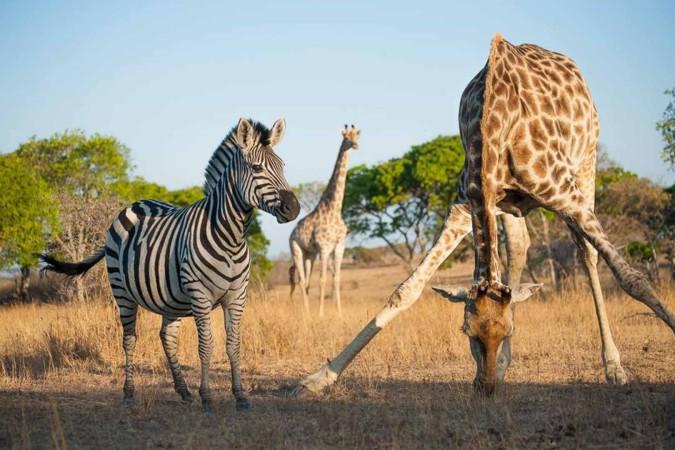
Dry Season at the savannah of Marondera - © Imire Rhino & Wildlife Conservation
Essential Travel Information
Getting Around Marondera
- Minibuses (Kombis): The most common form of public transport, minibuses or “kombis,” provide affordable rides around town and to nearby cities. They are widely used by locals, though they can be crowded.
- Taxis: Taxis are readily available in Marondera and are a convenient option for travelers who prefer more privacy or are unfamiliar with local routes. Taxis may be hailed on the street or booked via your hotel.
- Car Rentals: For those looking to explore the surrounding areas, renting a car is a great option. There are several rental agencies in Marondera and nearby Harare. The roads are generally in good condition, but it’s recommended to have a GPS or local map for navigation.
- Cycling and Walking: Marondera is small enough to explore on foot or by bicycle. Walking is a great way to experience the local culture and interact with residents. Many visitors enjoy leisurely walks or have a cycling tour to markets, parks, and historical landmarks.
ATM & Banking Service
Marondera provides several ATM and banking services to ensure easy access to cash for travelers. While ATMs are available in town, they can occasionally run out of cash, especially on weekends, so it's wise to withdraw early. International cards such as Visa and Mastercard are generally accepted at most ATMs, though fees may apply. It’s also advisable to have some cash on hand when visiting rural areas, as electronic payment options may be limited.
Where to Stay in Marondera
- Guesthouses: These guesthouses are family-run establishments, offering personalized service, home-cooked meals, and a welcoming atmosphere, making for an intimate stay with a chance to engage more closely with the community.
- Lodges and Safari Camps: For nature lovers, lodges and safari camps offer comfortable accommodations in close proximity to wildlife reserves. These lodges provide a chance to experience safari adventures while enjoying amenities such as guided tours, outdoor activities, and meals with scenic views of the surrounding nature.
- Hotels: Travelers looking for modern conveniences will find several hotels in town, offering services such as Wi-Fi, air conditioning, and on-site dining. These hotels are conveniently located near Marondera’s key attractions, providing easy access for those who prefer a more conventional lodging experience.
- Farm Stays: A unique option in Marondera is staying on a local farm, where visitors can experience rural life up close. Farm stays offer rustic accommodation combined with outdoor activities like horseback riding, hiking, or even participating in daily farm work, offering an immersive experience in Zimbabwe’s countryside.
Des articles pour vous

Voyage à Kampong Cham - Cambodge, Asie
Kampong Cham est une charmante ville riveraine située le long du fleuve Mékong. Connue pour son importance historique et ses attractions culturelles, Kampong Cham offre un mélange d'architecture coloniale, de temples anciens et de paysages pittoresques. Kampong Cham est reliée au district voisin de Tbong Khmum par le pont Kizuna, le premier pont au Cambodge à traverser le fleuve Mékong, en faisant un carrefour de transport crucial pour la région.
Population : Estimation de 80 000 habitants (en 2024)
Économie : Bien que n'étant pas encore une destination touristique majeure, Kampong Cham propose des sites culturels et historiques, tels que le temple Wat Nokor et le pont en bambou de Koh Pen, ainsi que des attractions naturelles comme des forêts et des chutes d'eau. Le gouvernement se concentre sur le développement du tourisme pour améliorer l'économie locale.
Points d'intérêt : Wat Nokor Bachey, Phnom Han Chey, Phnom Pros et Phnom Srey, pont en bambou de Koh Pen, Wat Joy T'maw, Preah Theat Teuk Chha, piste d'atterrissage abandonnée de l'US.

Explorez Nha Trang - Voyage au centre du Vietnam, Asie
Nichée le long de la magnifique côte du Vietnam, Nha Trang se distingue comme une destination de premier choix pour les voyageurs. Cette ville côtière, réputée pour ses superbes plages et sa vie marine foisonnante, s'adresse à tous. Nha Trang vous accueille à bras ouverts, que vous recherchiez des aventures, de la culture ou de la détente au bord de la mer. Ce guide vous fera découvrir les points forts de cet endroit magnifique, facilitant ainsi la planification de votre voyage de manière fluide et excitante.
Population : Environ 423 000 habitants en 2019.
Économie : L'un des principaux centres touristiques du Vietnam et la plus grande économie de la province de Khanh Hoa.
Sites emblématiques : Célèbre pour les tours Cham de Po Nagar, la cathédrale de Nha Trang et l'île Hon Mun.

Voyage à Sihanoukville - Cambodge, Asie
Sihanoukville, une ville côtière du sud-ouest du Cambodge, est la capitale de la province de Preah Sihanouk. Située sur une péninsule le long du golfe de Thaïlande, la ville est bien reliée à Phnom Penh par des autoroutes principales et dispose d'un aéroport international.
La ville abrite le seul port en eau profonde du Cambodge, jouant un rôle crucial dans la logistique et le commerce du pays. Les plages magnifiques de Sihanoukville, telles qu'Ochheuteal et Serendipity, attirent aussi bien les touristes nationaux qu'internationaux. Le développement économique a prospéré ces dernières années, en particulier grâce à la création de la Zone économique spéciale de Sihanoukville (SSEZ) et aux investissements chinois dans les casinos, l'immobilier et les stations balnéaires. La ville offre également des attractions naturelles telles que le parc national de Ream et plusieurs îles voisines, en faisant une destination variée pour les voyageurs d'affaires et de loisirs.
Population : La population de Sihanoukville était d'environ 160 000 habitants en 2024.
Économie : Sihanoukville, une ville côtière en pleine croissance au Cambodge, se distingue par son mélange dynamique de développement économique et de tourisme. La Zone économique spéciale de Sihanoukville (SSEZ) est devenue un pôle industriel majeur, abritant plus de 180 entreprises et créant des milliers d'emplois. Avec le seul port en eau profonde du Cambodge, la ville joue un rôle clé dans le commerce et la logistique du pays. Bien qu'elle se soit transformée d'une petite ville balnéaire tranquille en un centre urbain animé, Sihanoukville reste célèbre pour ses plages immaculées, attirant des touristes tout au long de l'année. Les investissements chinois importants ont alimenté la croissance des hôtels, des casinos et de l'immobilier, faisant de la ville un centre d'opportunités économiques et d'hospitalité.
Monuments : Plage d'Otres, Plage d'Ochheuteal, Plage de l'Indépendance, Parc national de Ream, Chute d'eau de Kbal Chhay, Monument des Lions d'Or, Wat Leu.

Explorez Kharkhorin - Voyage en Mongolie, Asie
Bienvenue à Kharkhorin, un trésor historique niché au cœur de la Mongolie. Ancienne capitale vibrante de l'Empire Mongol sous le légendaire Gengis Khan, Kharkhorin se dresse comme un témoignage de la riche culture et de l'histoire de la Mongolie. Cette ville antique possède une combinaison unique d'importance historique et de paysages époustouflants, en faisant une destination incontournable pour un voyage de rêve en Mongolie. En mettant le pied à Kharkhorin, vous ferez un saut dans le temps, à une époque de grands palais, de routes commerciales prospères et d'échanges culturels sans pareils. Que vous soyez intrigué par les ruines anciennes, désireux d'explorer les traditions locales ou simplement en quête d'une immersion dans la beauté naturelle de la Mongolie, Kharkhorin a quelque chose à offrir à chacun.
Population : Environ 1 000 habitants en 2020.
Économie : L'une des attractions touristiques les plus importantes de la Mongolie et l'ancienne capitale de l'Empire Mongol.
Monuments : Célèbre pour les Ruines de Kharkhorin, le Monastère d'Erdene Zuu, et la Vallée d'Orkhon, un site du patrimoine mondial de l'UNESCO.

Explore Luang Prabang - Laos Travel, Asia
Luang Prabang, nestled in northern Laos at the meeting point of the Mekong river and Nam Khan river, is a city celebrated for its rich cultural heritage and stunning natural beauty. Recognized as a UNESCO World Heritage Site in 1995, it boasts a unique blend of traditional Lao and French architecture that has been carefully preserved. Whether you're wandering through its ancient temples, admiring the local architecture, or soaking in the natural beauty of waterfalls and rivers, Luang Prabang offers something for everyone.
Population: Approximately 470,000 in 2020.
Economy: Luang Prabang's economy thrives on tourism, with its UNESCO status drawing visitors to its temples, natural wonders, and cultural experiences. Local crafts, hospitality, and small businesses also play vital roles, supporting the town's sustainable growth. Local crafts, hospitality, and small businesses also play vital roles, supporting the town's sustainable growth.
Landmarks: Famous for the Wat Xieng Thong, Royal Palace Museum (also known as Haw Kham), and Mount Phousi (Phou Si Hill).Luang Prabang, nestled in northern Laos at the meeting point of the Mekong river and Nam Khan river, is a city celebrated for its rich cultural heritage and stunning natural beauty. Recognized as a UNESCO World Heritage Site in 1995, it boasts a unique blend of traditional Lao and French architecture that has been carefully preserved. Whether you're wandering through its ancient temples, admiring the local architecture, or soaking in the natural beauty of waterfalls and rivers, Luang Prabang offers something for everyone.
Population: Approximately 470,000 in 2020.
Economy: Luang Prabang's economy thrives on tourism, with its UNESCO status drawing visitors to its temples, natural wonders, and cultural experiences. Local crafts, hospitality, and small businesses also play vital roles, supporting the town's sustainable growth. Local crafts, hospitality, and small businesses also play vital roles, supporting the town's sustainable growth.
Landmarks: Famous for the Wat Xieng Thong, Royal Palace Museum (also known as Haw Kham), and Mount Phousi (Phou Si Hill).

Explore Vientiane - Laos Travel, Asia
Vientiane, the capital of Laos, offers a unique travel experience for those looking to explore a peaceful Southeast Asian city with a deep connection to its cultural roots. Unlike other bustling capitals, Vientiane boasts a serene and laid-back atmosphere, making it a perfect destination for travelers wanting to escape the chaos of more crowded cities. This charming city sits along the Mekong River, offering scenic views, rich history, and a vibrant yet tranquil way of life. As a gateway to exploring Laos, this capital invites you to slow down, immerse in its heritage, and enjoy the local flavors.
Population: Approximately 840,000 in 2023.
Economy: Vientiane's economy is growing steadily, driven by government services, trade, and tourism. Key sectors include agriculture, manufacturing, and construction. The city's strategic location along the Mekong River supports trade with neighboring Thailand and Vietnam.
Landmarks: Famous for the Pha That Luang, Patuxai, and the Buddha Park (or Wat Xieng Khuan).
